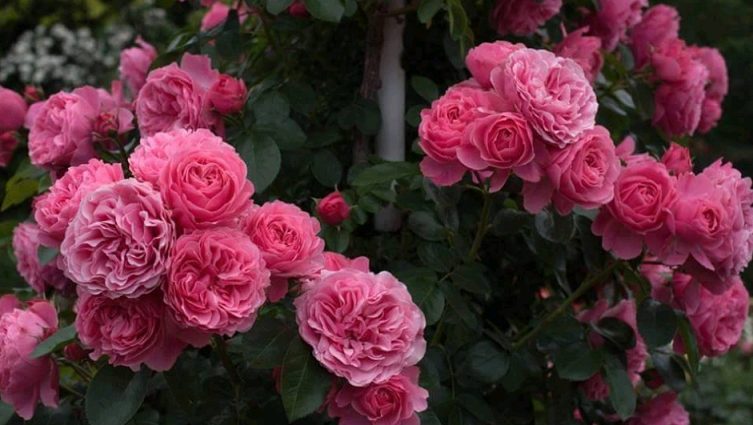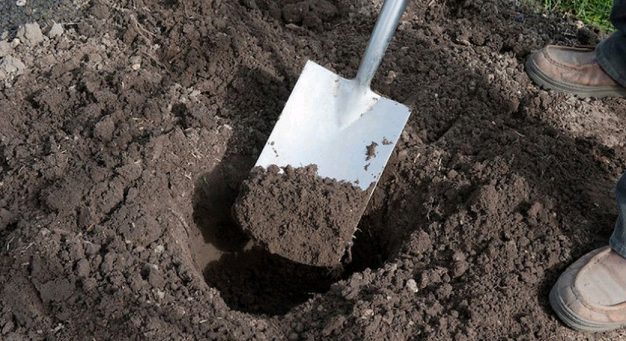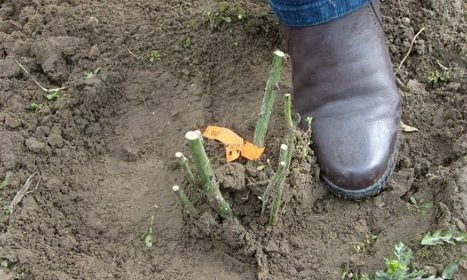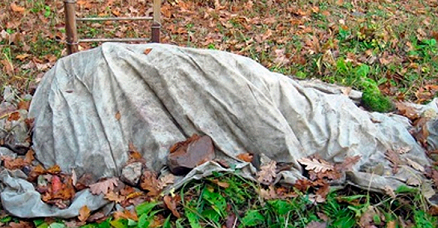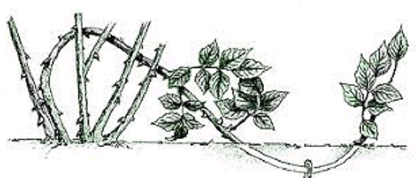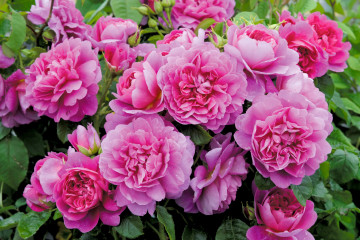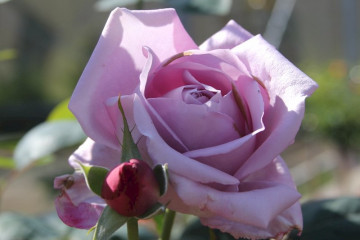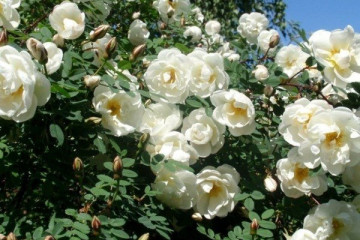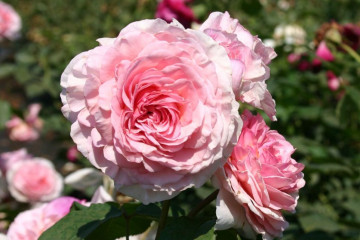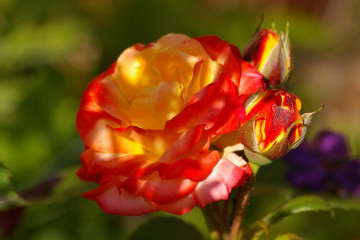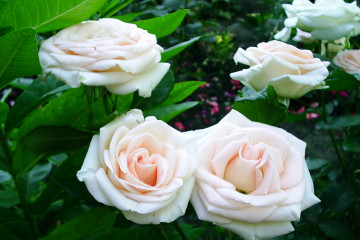Rosa Parade (Parade) - description of the Claiming variety
Content:
A flower grower who wants to decorate the front part of his garden with a climbing rose cannot remain indifferent to the flower with the symbolic name Rose Parade. A delightful bush with large buds will become a bright accent of any design solution.
Rose Parade
The Parade rose belongs to the Floribunda class. It was launched in the United States in 1953 by the agribusiness company Boerner. New Dawn and World's Fair roses were used to create the variety.
Climbing rose bush Parade belongs to the climing group and is able to delight owners with large dark pink or reddish-cherry buds almost all summer. The flowers bloom slowly, reaching 10 cm in diameter, each has about 30 densely double petals. Their almost neon color becomes richer towards the center and brightens around the edges. The name of the rose corresponds to the festive atmosphere that these gorgeous flowers give.
A bush grows up to 4 m high, up to 2 m wide. Belongs to the group of climbers - "climbing" roses. Small glossy green leaves densely cover thin shoots. The advantages of the variety are:
- disease and pest resistance;
- good tolerance of recurrent frosts;
- unpretentious care and soil quality;
- relatively small size of the bush;
- uncomplicated reproduction;
- lush remontant bloom, light aroma (reminiscent of bergamot).
The disadvantages are:
- instability to excessive soil moisture;
- fragility of shoots;
- pallor due to sunburn;
- the need for shelter for the winter.
Rose Parade is one of the most beautiful intertwining roses used by designers to create unrivaled compositions. In the garden, the bush can "act" solo, it is combined with other ornamental plants in the combined flower bed. Neighbors for a rose are often determined by the contrast of the color of buds and leaves. An excellent company will be, for example, lilac clematis, white jasmine bushes. These roses are sometimes grown as a cut variety. Rose Parade can grow in a room. This domestic culture is called Parade Mix.
The rose parade has an amazing ability to quickly weave any base. Because of this, it is often used to frame arches, building walls, and columns. Can be grown without a lush bush support.
Growing a flower, how to plant it in open ground
In open ground, for example, in a garden at a dacha, the Parade rose is planted in spring and autumn, this is especially true for central Russia. This is best done in May, when the soil warms up to a temperature of 10-12 ° C. October is suitable for autumn planting.
Rose Parade is a light-loving bush. When growing in the shade, the plant produces long shoots with single small flowers. When planting near a wall, you need to maintain a distance (at least 40 cm) for better air circulation. Otherwise, the leaves will not dry out after rain and the likelihood of fungal infection will increase.
Of the soil, loose loam is most suitable for a seedling, but the plant will also master on clay and sandy soil. The planting hole should be at least 50 cm. Roses do not tolerate acidic soils.Neutralization with lime, furnace ash or chalk is required.
It is important to exclude waterlogging of the landing site. Groundwater in the area of planting a bush should lie no closer than 1.5 m deep, otherwise root decay is likely.
It is advisable to prepare the soil for planting in the fall, and plant a rose in the spring. For this, the site must be dug up. Sandy soil is diluted with clay (10 kg / 1 m2) and humus (3-4 kg / m2), and sand and peat (20 kg of sand + 3-4 kg of peat per 1 m2) are added to the clay soil.
The future underground part of the seedling is shortened to 30 cm, damaged branches and roots are removed, the sections are covered with ash. Disinfection with copper sulfate and treatment with "Kornevin" is desirable.
When landing you need:
- dig up the soil, add fertilizers to it;
- moisten the roots of the seedlings. To do this, place them in water for half an hour. You can add root stimulants (root, epin);
- place the root of the bush in the hole, straighten it;
- fill the hole with soil and tamp it;
- water the bush;
- cut off shoots. For flowering, 15 cm in length is enough.
In the case of a close occurrence of groundwater, a stone is placed at the bottom of the planting hole so that the roots of the plant develop horizontally.
Plant care
The rose is not demanding on moisture, so it is enough to water the bush once every 7 days. Watering rules are as follows:
- one-time watering of one plant should be 15 liters; in extreme heat, it can be increased to 20 liters of water. Excess moisture provokes the fungus, and its lack - the weak development of the plant;
- watered preferably with warm water, ideally rainwater;
- additional moisture retention is facilitated by the creation of a roller around the bush, as well as mulching;
- after a couple of days, the soil is loosened for normal air access;
- after the end of flowering, watering is reduced, and with the onset of cold weather, they stop (preparation for winter).
Compared to other varieties of climbing roses, Parade is demanding in terms of fertilization. It is advisable to feed the bush once every 10-20 days.
After the end of the hibernation period, ammonium nitrate is introduced into the soil (1 tbsp. Spoon under the bush, then water). This feeding is repeated after 2 weeks. With the onset of budding, the rose is fertilized with complex nitrogen-containing mixtures. Before flowering, the bush should be "fed" with organic matter (mullein infusion (1:10) at the rate of 3-5 liters per one bush). The first wave of flowering should end with fertilizing in the form of complex phosphorus-potassium fertilizers without nitrogen. Before wintering, the plant is poured with superphosphate (30 g per 1 sq. M).
The above scheme does not apply to a first year plant. During this period, the climbing rose Parade practically does not need feeding. If fertilizers were applied to the planting hole, then you don't have to worry about the plant until August.
You need to prune the bush regularly. Two pruning is carried out: in spring and in autumn. Spring sanitary - consists in cutting off frozen twigs to the first bud. This is done with a sharp pruner at an angle of 45º. Three- and four-year-old shoots are removed completely. Shoots of this year and the past are left in 3-7 pieces, of which they form a bush.
In the summer, faded buds are removed - this is how growth and flowering are stimulated. Shoots extending from the root should be cut out so that the bush does not lose its species characteristics. As the stems develop, they are tied to a support.
The bush is protected from winter frosts. To do this, it is removed from the support on a pillow of dry grass and covered with earth to a height of 30 cm. Before that, all the foliage is cut off.
Cover the plant with a layer of leaves, grass. Spunbond or lutrasil is used for additional protection. Some gardeners make a "roof" from a box, a thick layer of spruce branches.
You can build a bush shelter directly on the support.For this, the bush is covered with spruce branches and wrapped on top with non-woven material. In the spring, it is very important not to miss the moment and open the rose on time, otherwise it will rot.
Blooming rose
The parade rose begins to bloom in the second year of life. This is a delightful process that delivers a truly aesthetic pleasure. The rose throws out densely double flowers with many petals.
For full flowering, maximum illumination of the plant in the morning hours and partial shade at lunchtime is desirable. When watering, it is important to make sure that no water gets on the leaves and buds.
The lack of flowers in a rose may be for the following reasons:
- improper lighting in the area where the bush grows. The rose needs light at least 8 hours a day;
- inadequate pruning of the bush. Strongly shortened shoots compensate for the lack of greenery by the absence of flowering. Poorly removed root growth can also stun the bush;
- the plant is weakened due to illness or improper watering;
- overfeeding. Inexperienced gardeners recommend weekly feeding of the plant, this is a mistake. This approach does not stimulate flowering, but on the contrary - the bush increases the green mass and releases only 1-2 buds per season.
Flower propagation
The seeds of the hybrid are not propagation material, because do not convey the quality of the original plant. Propagated rose Parade:
- layering;
- cuttings.
Cuttings are cut from the lignified shoot before flowering. This area should contain three living buds. For rooting, cuttings are dropped into the ground or placed in water. After the roots appear, the young plant is ready for planting in a permanent place.
Reproduction of Parada by layering is the best option. It is held in late spring or early summer.
Here is a description of the propagation of the climbing rose Parade by the layering method. Need to:
- press a flexible young shoot to the ground;
- make a hole 30 cm from the top;
- bend this shoot, cut the bend and lower it into the hole;
- fill the hole with earth;
- direct the top of the shoot vertically upwards.
Diseases, pests and ways to control them
The rose is susceptible to damage:
- black spot;
- powdery mildew;
- gray rot;
- rose cicada;
- thrips;
- bark cancer;
- spider mite.
Treatment with fungicides (Gumistar, Fitosporin-M), correct, timely pruning of the plant allows you to overcome black spot, powdery mildew, gray rot and rust. Pest control is carried out using insecticides (Karbofos, Iskra Zolotaya, Konfidor).
The plant is highly resistant to black spot and powdery mildew. These diseases rarely affect the bush.
Rosa Parade is today considered the best in its group due to its beauty and other positive qualities. Its cultivation is within the power of even novice gardeners.
